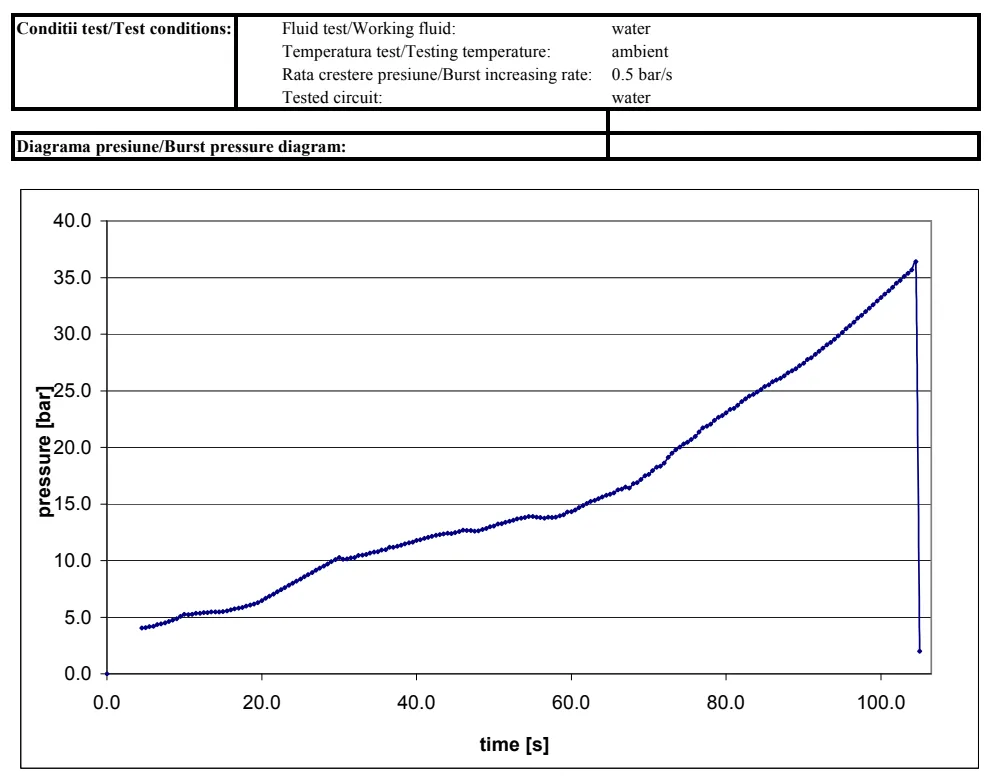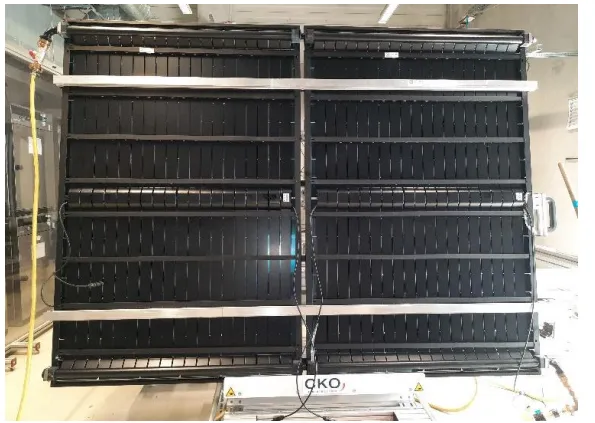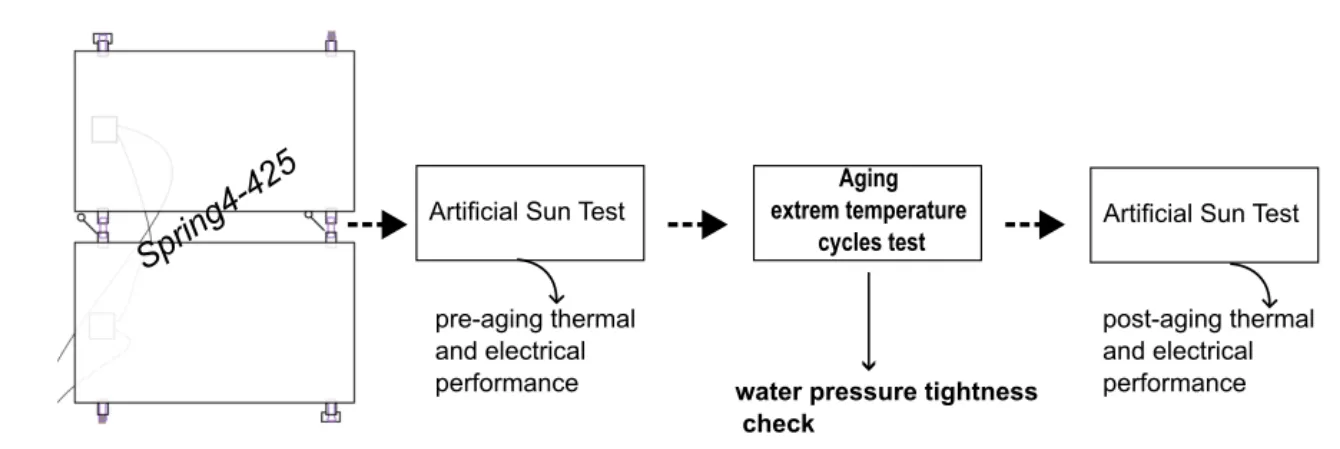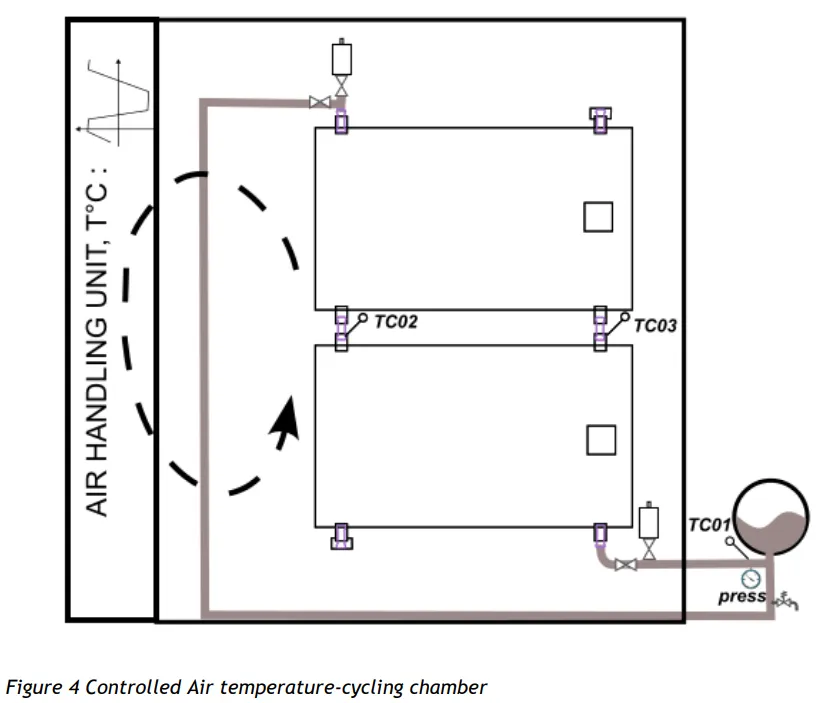How is the resistance of the thermal part of SPRING4 ensured?
SPRING4 panels have been subjected to a series of rigorous tests to ensure their resistance to pressure and their perfect seal over time.
Maximum operating pressure of the SPRING4 exchanger: 6 bars
The SPRING4 exchanger, developed specifically to withstand high pressures, was tested from the design stage and throughout production. The maximum pressure that we approve, known as: maximum operating pressure, was set following these tests at 6 bars.
Maximum pressure test of the exchanger tested: 36 bars
During their industrialization, the exchangers passed the most demanding pressure test: the pressure in a water circuit is gradually increased until a leak appears. The pressure reached was 36.4 bars, or 6 times the maximum nominal pressure.
Maximum panel pressure test: 15 bars
The installed panels (exchanger, PV panel and connections) were also subjected to the most demanding pressure test: the pressure in the water circuit is increased until a leak is detected, reaching 15.75 bars, i.e. 2.6 times the maximum pressure
Tightness of connections: 10 bars
The fittings have been tested at 10 bar, which is 1.6 times the maximum allowable pressure. No signs of leak were detected.
Sealing after aging under pressure: 6 bars
To validate their resistance under extreme conditions, an independent laboratory, TÜV, tested a pair of panels with their connections under conditions simulating a real installation. The panels underwent thermal cycles from -40°C to 80°C under a pressure of 6 bars, in order to simulate accelerated aging. No leaks were detected after 200 cycles.
Maintaining pressure after aging: 3.2 bars
Additional tests were carried out in an independent laboratory, the CEA, on a system comprising a pair of panels, fittings and an expansion tank, simulating an installation in real conditions. The panels endured cycles from -40°C to 80°C with pressure regulation using a 27L expansion tank, inflated to 3.2 bars.
The graph below shows pressure variations between 3.39 and 3.47 bars, with an average of 3.43 bars. These variations are normal and reflect fluid temperature fluctuations, compensated by the expansion tank. This behavior confirms the absence of leaks at the end of the 61 test cycles.
This preliminary evaluation of the SPRING4 assembly concept demonstrated its robustness: no leaks were detected, both visually and by monitoring pressure variations, which remained stable throughout the tests.
Pressure test at production outlet: 1.5 bars
Each Dualsun SPRING4 like SPRING3 panel is tested upon leaving production at 1.5 times the maximum authorized operating pressure to verify their tightness. The protocol and testing tools are standard and certified in the solar thermal industry.
The measurement carried out is a measurement of the variation of air pressure in the panel over a given period of time then converted and communicated in the form of a leak rate.
The applied pressure test protocol has been validated by all of our certification bodies around the world as part of the Solar Keymark (EUR), ICC-SRCC (USA), CEC (AUS)...
Maintenance of insulators
The SPRING4 insulators have an improved retention system compared to the SPRING3: the insulation is maintained at the ends of the panel but also in the center of the panel, which prevents the insulators from creeping downwards.
To go further: What are the technical characteristics of the SPRING exchanger?






